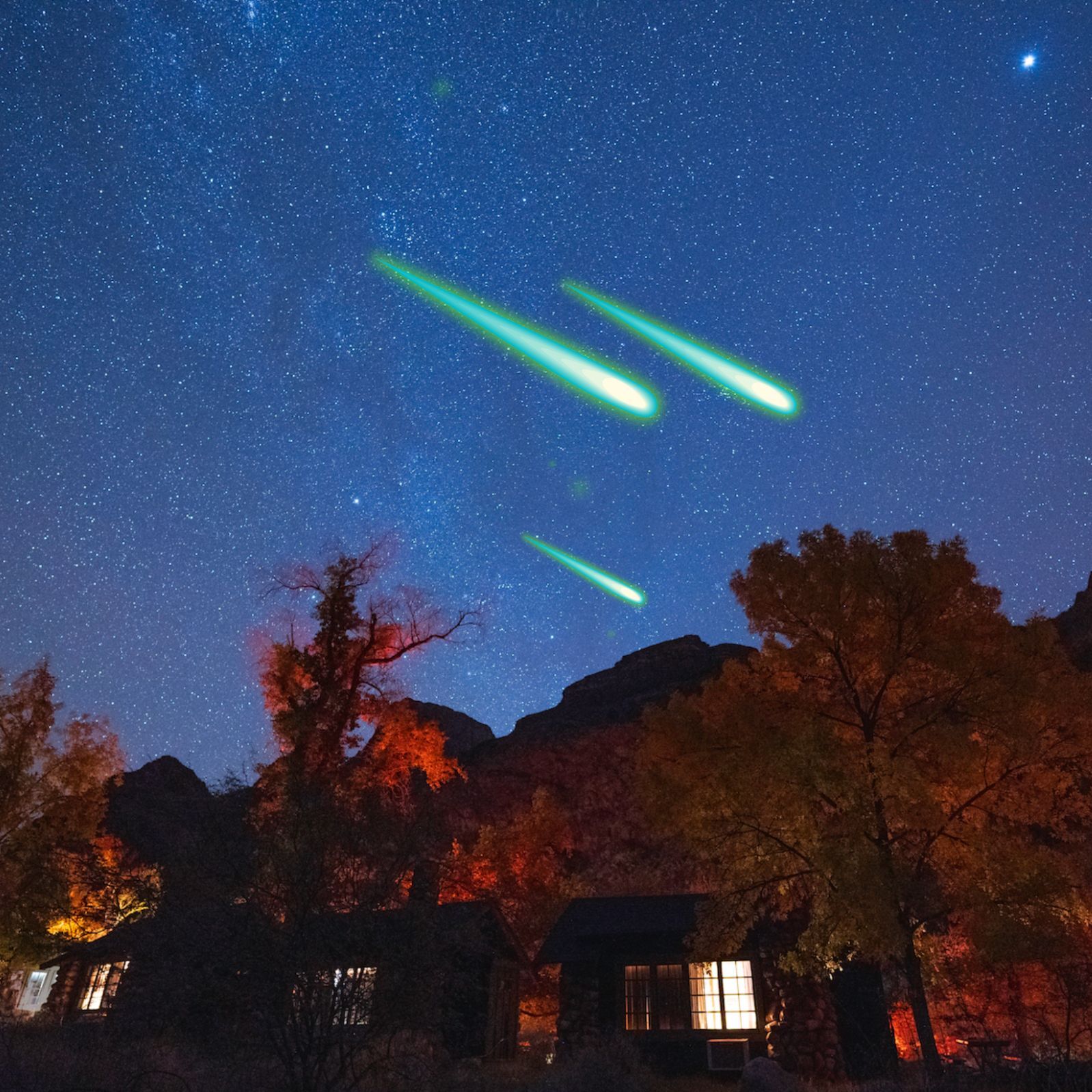I shrieked like a kid on a carnival ride the first time I saw a fireball—an exceptionally bright and colorful meteor. It was autumn 2022, and I was on a northern-lights road trip in Iceland. I’d spent hours watching the sky fill with green swirls, but this surprise, teal-tinged streak stole the show.
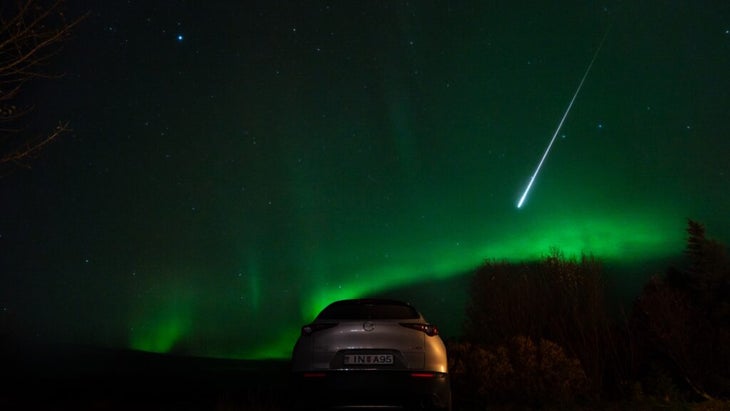
I expect to see more of these cosmic marvels when the year’s most powerful meteor shower, the Perseids, peaks on August 12. According to the , the spectacle could produce up to 100 meteors per hour as debris from the shower’s parent comet, Swift-Tuttle, strikes earth’s atmosphere, creating the effect of shooting stars that could be visible for up to several minutes. Thanks to the comet’s above-average size, says the Perseids produce more fireballs, which can have subtle blue and red hues, than virtually any other shower.
Weather permitting, and in areas without light pollution, this year’s Perseids could put on an exceptional display between midnight and early morning from August 11 to 13. That’s because around midnight each night, the waxing gibbous moon will slide beneath the horizon, eliminating lunar light that diminishes stargazing.
How to See the Perseid Meteor Shower
The Perseids appear near the Perseus constellation, which will climb higher in the northeast-east sky throughout the night. (Download a stargazing app beforehand if you need help locating Perseus.)
Seek out a viewing spot with as few overhead obstructions as possible, such as a hillside above the treetops, a sprawling desert, or an open field. While the bulk of activity will happen eastward, keep your eyes peeled across the sky for any Delta Aquariid meteors; says this Southern Hemisphere shower is expected to speckle our sky on these nights, too.
Here’s a time lapse of last year’s Perseid shower in California’s Joshua Tree National Park, to give you an idea of how a night might go:
It’s important to know that, unlike the powerful May 10, 2024 aurora show, which was so strong it dazzled Americans in the lower 48 with colorful ribbons in even the most light-polluted cities, you can’t watch the Perseid meteor shower just anywhere. In addition to clear skies with few clouds, you need to set yourself up in a spot with minimal light pollution, as city lights can obscure all but the most powerful meteors.
To help you find those dark skies, and make the most of the year’s grandest meteor shower, I’ve picked seven of the best national parks for Perseids peeping, including many I’ve stargazed from myself. Read on for my recommendations of exactly where to watch within each park, as well as educational ranger-led events taking place.
The Best Dark Sky Parks to Watch the Perseid Meteor Shower
1. Grand Canyon National Park, Arizona
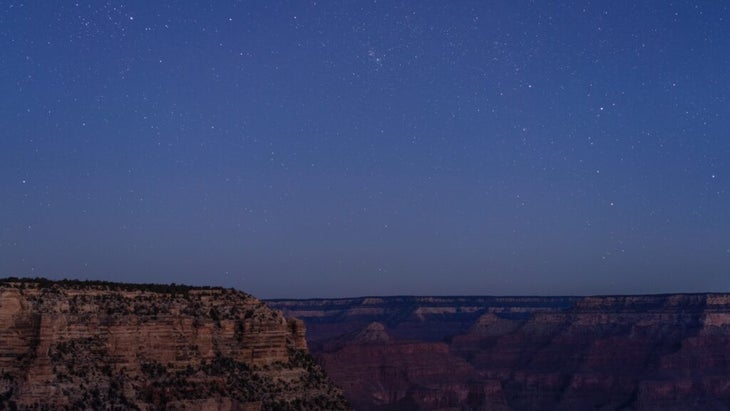
The Grand Canyon is lauded for its ancient rock layers, but in recent years, its nightscapes have become just as beloved. According to ranger and dark-sky advocate Rader Lane, stargazing is now the park’s most popular programming, with a special celebration for the Perseids.
The Grand Canyon, which is certified as a Dark Sky Park by light-pollution authority DarkSky International, will host astronomical events at the Grand Canyon Visitor Center, on the South Rim, from August 9 to 13 beginning at 9 P.M. In addition to watching for meteors and admiring the Milky Way, guests can enjoy laser-guided constellation talks led by rangers.
To chase the Perseids on your own, hit the South Rim Trail, which is open 24/7. Or snag a spot at the (from $18, with availability as of publication) and then stroll to the adjacent Desert View Point to watch for fireballs, with an otherworldly backdrop of the Elephant and Cardenas Buttes.
If you’re feeling lucky, apply for a backcountry permit via and head down into the canyon for a night of camping (from $10 per permit, plus a nightly charge of $15 per person), or even better, see if you can’t get a last-minute Phantom Ranch reservation (from $213.50 for two people per night), to watch the sky burst with comet confetti from my favorite Grand Canyon stargazing perch: the remote floor.
2. Voyageurs National Park, Minnesota
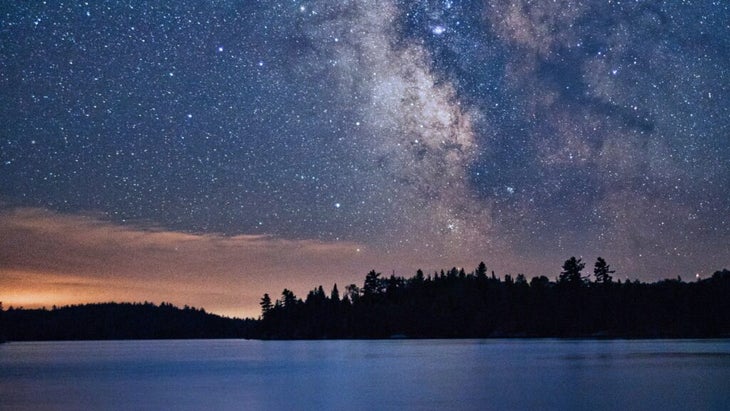
What makes Voyageurs great for national-park aurora hunting—massive lakes with open, unobstructed sky views—sets it up for ideal Perseids watching, too. More than a third of this Dark Sky-certified park is actually water, with front-country lodging and backcountry island camping promising picturesque shooting stars that reflect off glassy lakes.
Pre-game the Perseids with the , which takes place in the evenings from August 8 to 10. Scheduled experiences include telescope sessions, expert-led stargazing, and paddling under the stars (and potentially a few meteors).
Come Perseids peak, Voyageurs National Park suggests basing yourself at the Rainy Lake Visitor Center or the Meadwood Road Day Use Area near the Ash River Visitor Center for ideal sky watching. I had exceptional luck stargazing at the on Kabetogama Lake in 2020, with amazing panoramas of not only the Milky Way but that summer’s night-sky showstopper, Comet Neowise.
Another alternative for seclusion beneath the stars is camping on the islands that dot the park’s backcountry. Just make sure to avoid any spots with forested obstructions to the northeast-east sky. Campsites like Peary Lake, Namakan Island, and Sexton Island are all great; are required for backcountry camping (from $16), with canoe rentals available from the park (from $14).
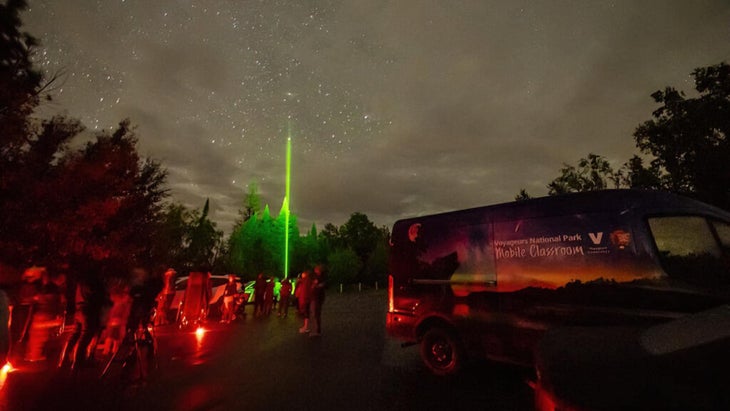
3. Badlands National Park, South Dakota
Alien-like sedimentary rock shapes at Badlands look even more extraterrestrial beneath a star-dotted sky. From this remote park, over 7,500 stars are visible on a given night, according to the park website, with skies dark enough to admire the Milky Way and the Perseids.
Badlands, which is being considered for Dark Sky International certification, runs a every evening at the Cedar Pass Amphitheater throughout the month of August, including during the August 11 to 13 Perseids peak. Guests can take a gander at the heavens via telescopes while listening to the park’s night-sky experts.
Many overlooks and open grasslands offer stellar meteor-shower views, too. Ed Welsh, an education specialist for Badlands National Park, suggests the Fossil Exhibit Trail (map below) and areas in the park’s north unit, which are farthest from city lights. The Pinnacles Overlook and are good plans as well.
If you’re craving particularly impressive starscapes, head to the nearby Badlands Observatory, less than 30 miles from the north unit’s Ben Reifel Visitor Center, for a of the night sky at 9:30 P.M. (from $29.70).
4. Glacier National Park, Montana
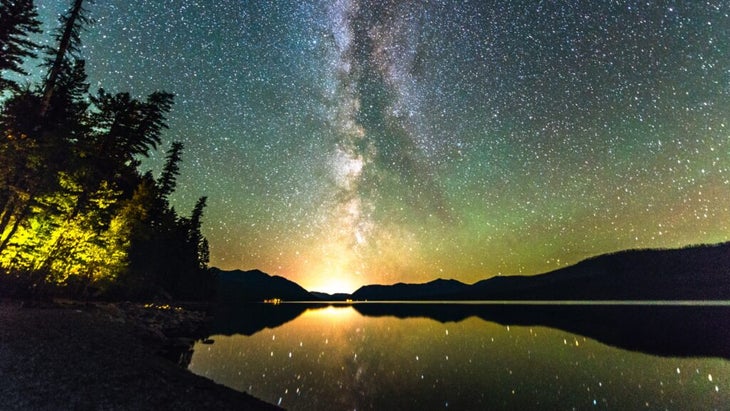
With virtually no light pollution, Glacier National Park—open all day and night—is a stargazing oasis. It’s also the first Dark Sky-certified park project to cross international borders, encompassing Glacier and its northern neighbor, Waterton Lakes National Park, in Alberta.
Skies here are about as inky as the Mountain West gets, making it the perfect setting for catching a meteor shower. And the spectacle will be enhanced by on August 11, 12, and 13; the “Half the Park Happens After Dark” event, which begins at 10 P.M. at the Apgar Visitor Center, includes astronomer-led sky tours and telescope experiences.
It’s hard to top the scene at mirror-still Lake McDonald, according to the . Much of the park lodging is booked during this time, but as of press time, you could still find a glamping tent at nearby , located just nine miles south of Lake McDonald (from $329). While towering pines obscure the stars above most tents, you can find open-sky vistas near the fire pits if you don’t want to head the short distance to the park.
5. Great Sand Dunes National Park and Preserve, Colorado
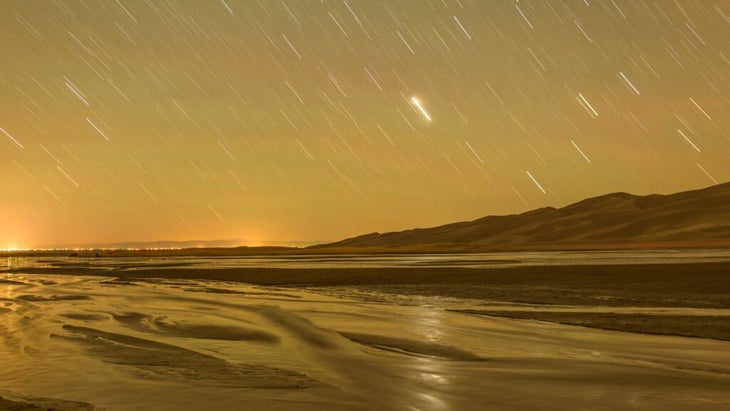
Enjoy a clear, unobstructed night sky in remote Great Sand Dunes, a Dark Sky-certified park that’s also open around the clock. Grab a towel and walk into the dunes to rest on the sand and patiently watch Perseus. Or for an even more remote view, there’s still availability for a permit via for the backcountry dunes (from $6) at least 1.5 miles or more into this massive swath of sand.
For a particularly space-like night, head roughly 30 miles west of the park visitor center to the quirky —a roadside attraction dedicated to chasing extraterrestrials, with an on-site tower, exhibit, and campsite (from $20). Closer to the small town of Del Norte, you might opt for a night in the ’s yurts or steelmaster sheds, which include access to 3D-printed, adobe-style Skylos rooms that look up into the open night sky.
6. Zion National Park, Utah
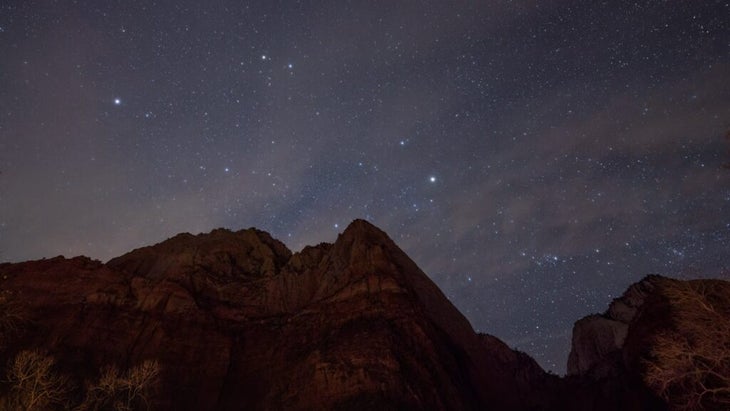
Zion leaves visitors slack-jawed at all hours, but nighttime is extra special—especially when shooting stars and fireballs soar overhead. The Dark Sky-certified park is open 24 hours, and one of my favorite places to enjoy wide-open views is the , accessible from the park visitor center and the South Campground. This area may be closer to the town of Springdale, but in 2023, the community actually became DarkSky-certified. The viewpoints like Lava Point Overlook and Wildcat Canyon Trailhead along Kolob Terrace Road for stargazing, too.
As of publication, there are still a few available spots at the visitor-center-adjacent (from $130) during the peak August dates. You can also spot the meteor shower nearby at astro-friendly properties like (from $252), which opened last summer with glamping tents, Airstreams, and accessible cabins.
7. Wrangell–St. Elias National Park and Preserve, Alaska
Remote barely begins to describe Wrangell–St. Elias, one of the least visited and largest national parks in the country. This isolation may make getting here hard—expect long transit times from Anchorage via car and bush plane—but when the midnight sun begins to wane and the park’s dark, starry nightscapes reappear, you’ll appreciate the effort.
While minimal light in small park towns like McCarthy promises stunning Perseids sightings, your best bet is to get into the park’s wilderness. For that, try an overnight backpacking trip on the Root Glacier with (from $580) This outing includes crampon hiking across the paper-white glacier, then sleeping on it, surrounded by not one but four mountain ranges. I recently camped here on the longest day of the year, but I’m already dreaming of a trip back to watch August’s potential two-for-one interstellar show: the Perseid meteor shower and the northern lights.

Stephanie Vermillion is an adventure and astrotourism writer and author of the upcoming National Geographic book , out December 3.
Editor’s note: Leave No Trace principles are just as important after dark; stick to the designated trails and viewing areas, pack out all that you bring in, and turn off your flashlight once you’ve arrived at your viewing spot to ensure others can enjoy the sights, too.


